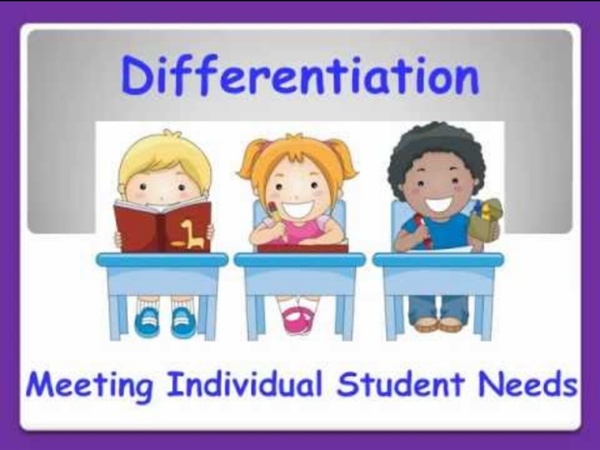



http://www.youtube.com/watch?v=mVRYSC8YyYA
UDL Examples and Resources Disclaimer: The examples and resources highlighted on these pages have been gathered for educational purposes. CAST does not necessarily endorse the products listed, nor does their inclusion here mean that these products are complete expressions of the UDL principles and guidelines. They may illustrate certain principles and not others. Below, you will find teacher-friendly examples and resources that illustrate each of the UDL checkpoints.
An Updated Digital Differentiation Model This is part of a Digital Differentiation model, my way i of weaving a web of flexible tools together for teaching and learning. To keep the model relevant, frequent updates are required, as new tools and trends emerge. To access the most current resources, please click on the tab at the top of this blog: Digital Differentiation - Current Updating Wire Side Chats: How Can Teachers Develop Students' Motivation What can teachers do to help develop students who will face challenges rather than be overwhelmed by them? Why is it that many students seem to fall apart when they get to junior high or middle school? Can the "gifted" label do more harm than good? Do early lessons set girls up for failure?
100+ Tools for Differentiating Instruction Through Social Media If you experienced none of these scenarios, then you live in a world of possibility because you grew up with the many social media tools available to support all learners. If any of these scenarios bring back memories as a teacher or student, then you understand that we have many more tools today to ensure that learners succeed despite struggles, because students and teachers have so much more available to meet every learner's needs. Selecting the Right Tool For educators differentiating instruction, social media tools embrace collaboration and global access to people and other resources. We give students a variety of learning experiences that incorporate the capability to:
Stacey, Grades 6-8: 2010 Resolutions: Setting Goals with Students Happy 2010, and welcome to a brand new decade! As we settle into the New Year, I believe that we are provided with a unique opportunity to remind our students that everyone can have a fresh start. By goal-setting with my students, I am reminded what is important to them in their educational journey. In addition, it provides me with the opportunity to make suggestions that may guide them in their goal-setting plan. Conducting individual conferences with my students upon the return to the classroom encourages students to get back into the school groove and really think about the time remaining in this academic year.
What Is Differentiated Instruction? So, how would you define differentiated instruction? In her newly revised book, The Differentiated Classroom: Responding to the Needs of All Learners, 2nd Edition, Carol Ann Tomlinson discusses the meaning of differentiation and how teachers can modify their instruction to engage all students. The book highlights key principles of differentiation, including: An invitational learning environment that encourages and supports learningQuality curriculumAssessment that informs teaching and learningInstruction that responds to student variance
How to Plan Lessons to Engage 21st Century Students About ETR Community EdTechReview (ETR) is a community of and for everyone involved in education technology to connect and collaborate both online and offline to discover, learn, utilize and share about the best ways technology can improve learning, teaching, and leading in the 21st century. EdTechReview spreads awareness on education technology and its role in 21st century education through best research and practices of using technology in education, and by facilitating events, training, professional development, and consultation in its adoption and implementation.
List of Great Tools for Different Kinds of Learners About ETR Community EdTechReview (ETR) is a community of and for everyone involved in education technology to connect and collaborate both online and offline to discover, learn, utilize and share about the best ways technology can improve learning, teaching, and leading in the 21st century. EdTechReview spreads awareness on education technology and its role in 21st century education through best research and practices of using technology in education, and by facilitating events, training, professional development, and consultation in its adoption and implementation.
To Teach Students First Several years ago when I was teaching AP European history, I struggled to meet the needs of the different learners in my class. I charged through the content as prescribed by the College Board and sought ways to differentiate learning and vary delivery through a few modes of instruction. It was not easy to do. Position Statement on Flexible Scheduling The library program is fully integrated into the educational program so that students, teachers, and school librarians become partners in learning. This integration strengthens the teaching for learning process to ensure students are active learners who guide and continually assess their learning process. Open access to a quality school library program is essential for students to develop the vital skills necessary to analyze, evaluate, interpret, and communicate information and ideas in a variety of formats. Inquiry skills are taught and learned within the context of the curriculum and may occur in the classroom, the library, or at home with 24/7 accessibility to a wide range of resources, technologies, and services. The integrated library program philosophy requires an open schedule that includes flexible and equitable access to physical and virtual collections for staff and students.
Collaboration and reflection Proactivity and Reflection: Tools to Improve Collaborative ExperiencesMinnesota Media, 2004 Collaboration is the Holy Grail of librarianship. It’s how we become indispensable to others, but it is arguably the most challenging part of our jobs.
Seven Tips to Make Teacher Collaboration Time Productive Become a Teacher >> Browse Articles >> Hot Topics Featured Author: Mrs. Laura Owen Mrs. S.O.S. for Information Literacy Collaboration is an evolving process that does not happen overnight. Here are some of our tips for developing successful collaborative relationships. Develop a "collaborative mentality."